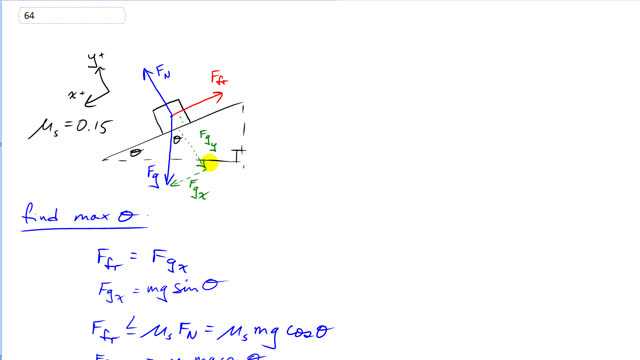
On an icy day, you worry about parking your car in your driveway, which has an incline of . Your neighbor’s driveway has an incline of , and the driveway across the street is at . The coefficient of static friction between tire rubber and ice is 0.15. Which driveway(s) will be safe to park in?

In order to watch this solution you need to have a subscription.
This is Giancoli Answers with Mr. Dychko. When the car is parked on the driveway, inclined driveway, we have a force of static friction directed up the driveway and the component of gravity along the driveway, directed down driveway and those two forces will be equal to each other when the car is at rest. So, we assume a coefficient of static friction of 0.15.. The x component of gravity is going to be mg times sine theta because this is the opposite leg of this gravity force triangle when you resolve it in two components. And the force of friction is going to be less than or equal to coefficient of static friction times the normal force. And this equals mg cos theta for the normal force because there's no acceleration perpendicular to the driveway, and so, the normal force up has to equal the total force down which is just the component of gravity in the y direction, and this is the adjacent leg. So, we use cosine theta times mg to get it. And the maximum friction force you can expect will be equal to muS times mg cos theta. And so, we'll put the maximum friction force possible equal to the x component of gravity. So, if mg sine theta equals muS mg cos theta, divide both sides by mg and they disappear. And then also divided by cos theta and you get the coefficient of static friction is sine theta over cos theta. And that is a trigonometric identity, tan theta. Sine theta over cos theta is always equal to tan theta. And that equals muS And this is the maximum angle we're talking about here since we said this. We put the maximum friction force you can expect is when all this is equal to muS mg cos theta. So, the maximum angle is the inverse tangent of muS which is 0.15, and that gives an angle of 8.5 degrees. So, only the 6 degree driveway is safe. Driveway with an angle more than 8.5 degrees, will result in the friction force that's not big enough to deal with the amount of gravity pulling the car down.